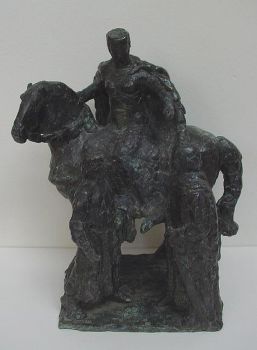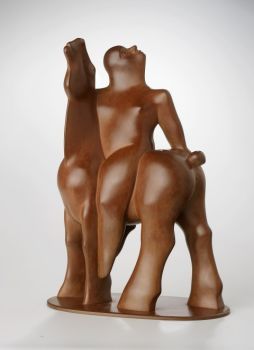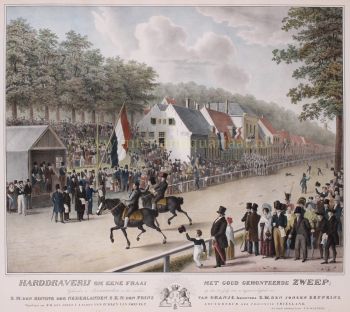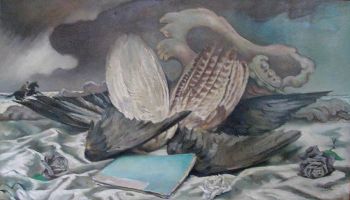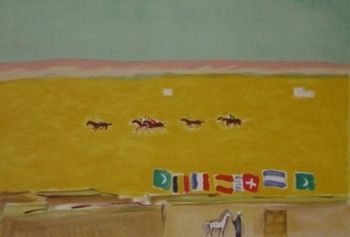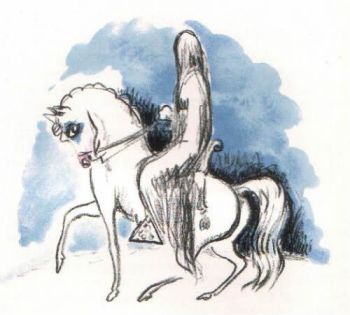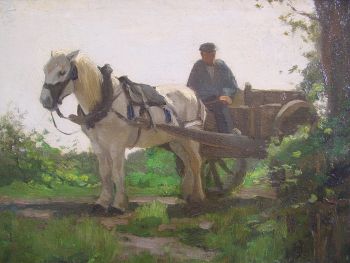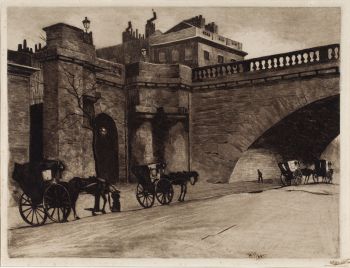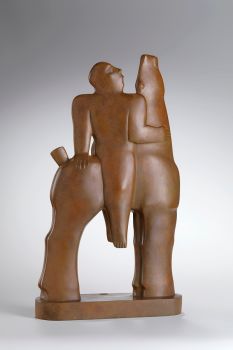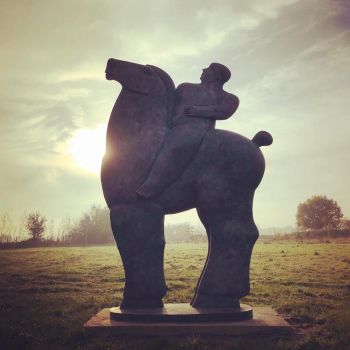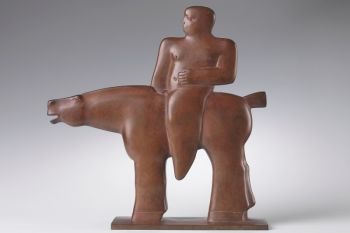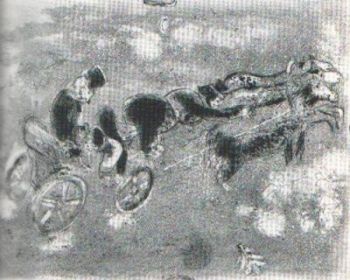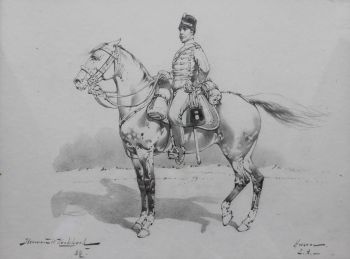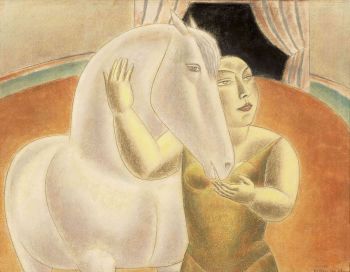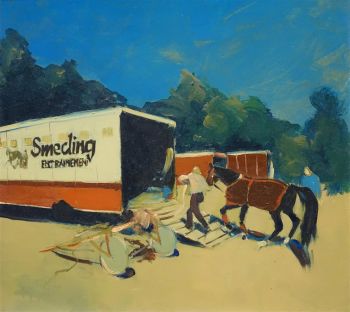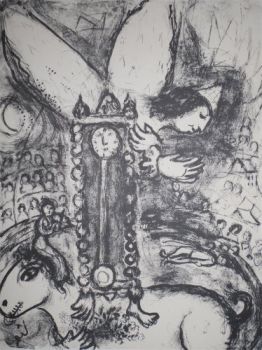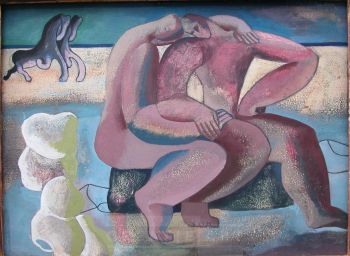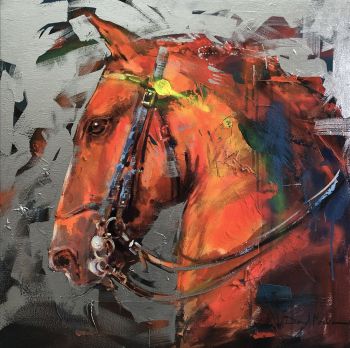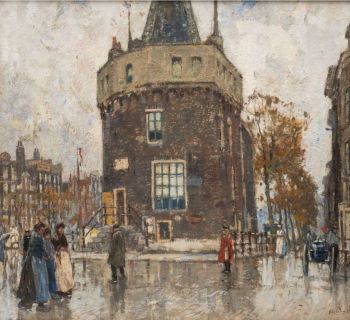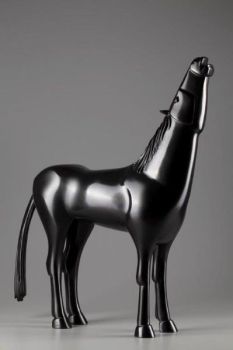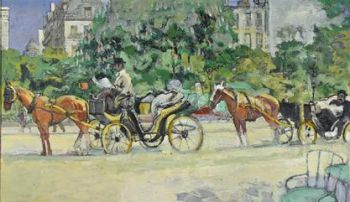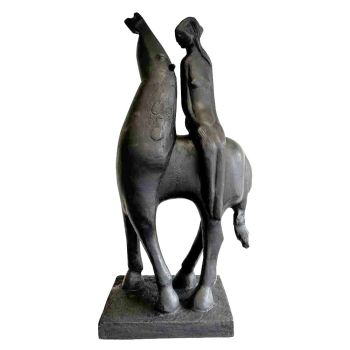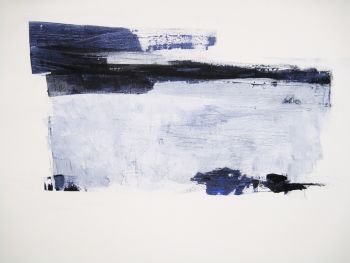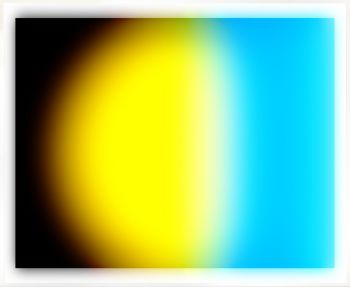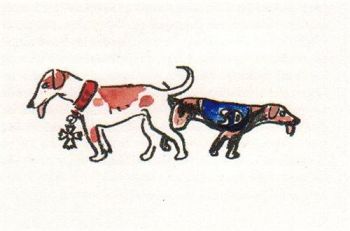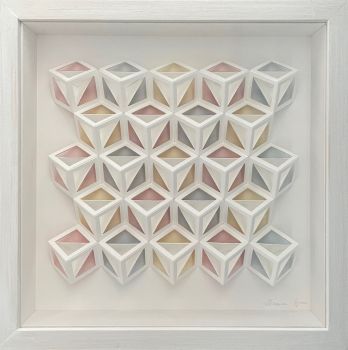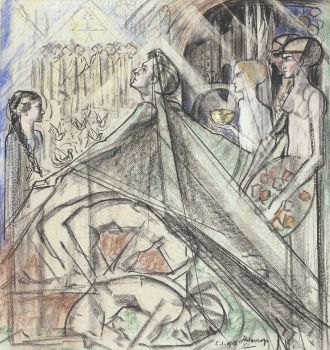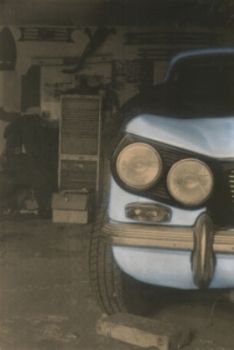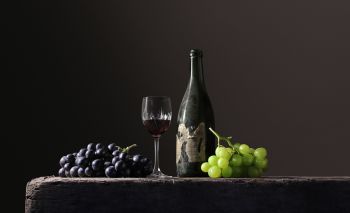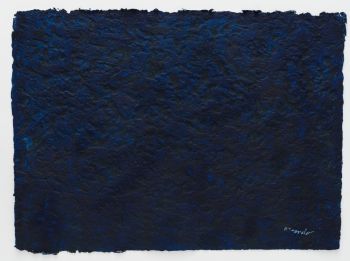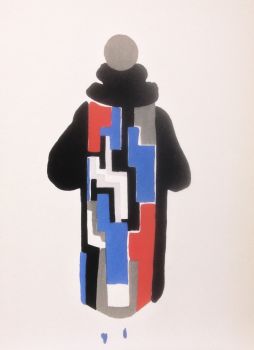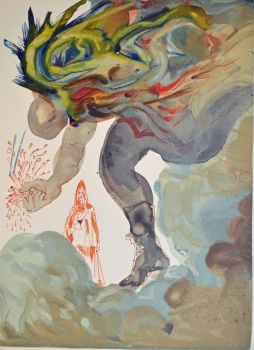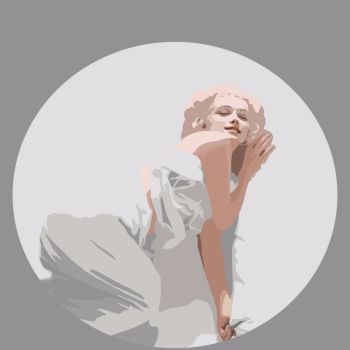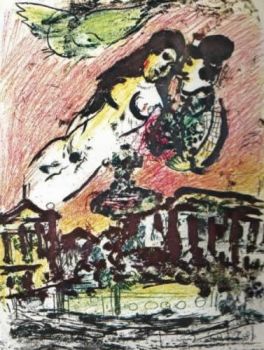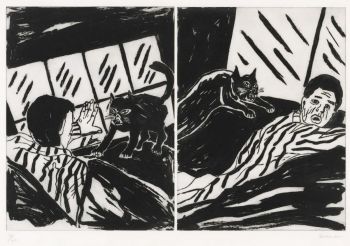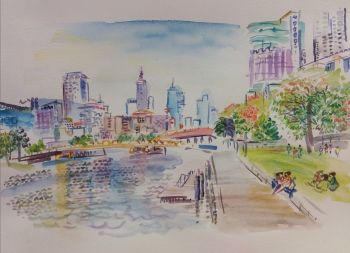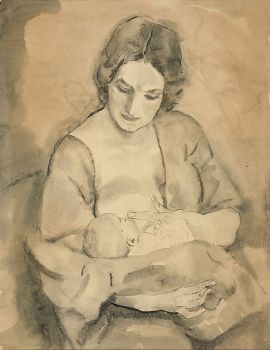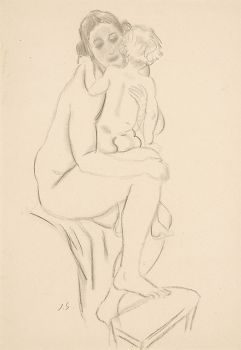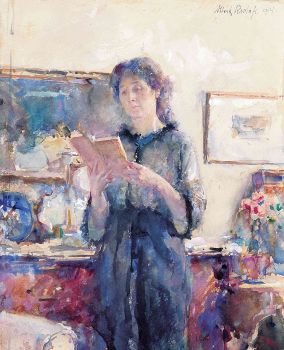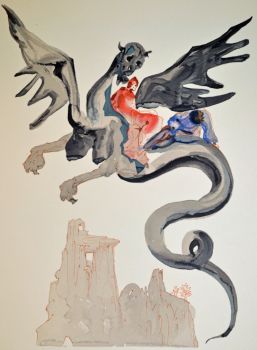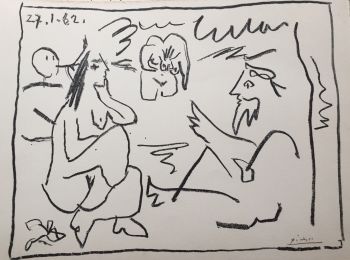14 hand-coloured aquatint plates of wonderful racehorses 1828
John Frederick Sr. Herring
TintaPapelAcuarela
60 ⨯ 42 cm
Actualmente no disponible a través de Gallerease
- Sobre la obra de artePortraits of the winning horses of the Great St. Leger Stakes, at Doncaster, from the year 1815 to the present year inclusive.
London, S. and J. Fuller (printed by L. Harrison), [1828].
Imperial folio (60×42 cm).
With engraved vignette on the letterpress title-page, 14 hand-coloured aquatint plates by T. Sutherland and R. G. Reeve after Herring, each with information on a separate letterpress leaf. Contemporary plain boards with publisher's printed label wrapper-title on front board (rebacked with burgundy half morocco and matching corners).
"Extremely rare" (Tooley) 1828 edition of Herring's finest work, the outcome of his fascination with horse racing in general and the St. Leger Stake in particular. "In the writer's estimation, the first series of the St. Leger winners contains the very best of Herring prints . . . they were engraved by Sutherland, a more competent aquatinter and colourist than his successors who handled these race-horses" (Siltzer).
This is the second edition of this series of wonderful racehorse portraits.
Very slight offsetting to text. Boards darkened and worn at the edges, internally in fine condition and untrimmed. A rare work with beautiful horse plates and detailed information.
Cf. Podeschi 128 (1824 ed. with different title, with 10 plates plus extra plate for 1825); Siltzer 139-146 (various eds.). - Sobre el artistaJohn Frederick Herring Sr. (1795, Londres - 1865), también conocido como John Frederick Herring I, fue pintor, fabricante de carteles y cochero. Herring era hijo de un comerciante de Londres. Los primeros dieciocho años de la vida de Herring los pasó en Londres, donde sus mayores intereses eran el dibujo y los caballos. En el año 1814 se trasladó a Doncaster. En Doncaster, Inglaterra, Herring fue contratado como pintor de letreros de posadas e insignias de vagones en los costados de los vagones, y su contacto posterior con una empresa propiedad de un tal Sr. Wood llevó al empleo posterior de Herring como conductor de vagones nocturnos. Herring pasó su tiempo libre pintando retratos de caballos para las posadas y se hizo conocido como el "cochero artista". El talento de Herring fue reconocido por clientes adinerados, y comenzó a pintar cazadores y caballos de carreras para la nobleza. En 1830 se fue a Newmarket, donde pasó tres años antes de trasladarse a Londres. De 1840 a 1841, Herring visitó París, pintando varios cuadros, por invitación del Duc d'Orléans (el duque de Orleans). En 1845, Herring fue nombrado pintor de animales de la duquesa de Kent, seguido de un encargo de la reina Victoria. En 1853, Herring se mudó a Kent y dejó de pintar retratos de caballos. Pasó los últimos 12 años de su vida en Meopham Park. Luego amplió su temática pintando escenas agrícolas, cuadros narrativos y trabajos deportivos de caza, carreras y tiro. Herring se ubica junto con Edwin Landseer como uno de los pintores de animales más eminentes de mediados del siglo XIX. Expuso en la Royal Academy de 1818 a 1865 y en la Society of British Artist en el período de 1836 a 1852.
Artwork details
Categoría
Tema
Estilo
Material y Técnica
Colour
Related artworks
- 1 - 4 / 24
Tilmanus Nicolaus Maastricht
Missale Romanum con monturas de plata holandesas1788 - 1792
Precio a consultarJacob J. Roosjen SRI
Engelbert Kaempfer
LIBRO DE ENGELBERT KAEMPFER1651 - 1716
Precio a consultarZebregs & Röell - Fine Art - Antiques
Antonie Derkinderen
Memory book Exhibition of Dutch Painting1892
Precio a consultarKunsthandel Pygmalion
Engelbert Kaempfer
LIBRO DE ENGELBERT KAEMPFER1651 - 1716
Precio a consultarZebregs & Röell - Fine Art - Antiques
LAWRENCE WEINER
"SKIMMING THE WATER [MENAGE A QUATRE]" Signed book plus small artwork2010 - 2014
Precio a consultarGallerease Selected
Yoko Ono
YOKO ONO: "ARISING" SIGNED BOOK PLUS SMALL ARTWORK 2010 - 2014
Precio a consultarGallerease Selected
Antonie Derkinderen
Memory book Exhibition of Dutch Painting1892
Precio a consultarKunsthandel Pygmalion
Hermann Nitsch
"UNDER MY SKIN" Signed book incl. small artwork and DVD in a matching box2010 - 2014
Precio a consultarGallerease Selected
1 - 4 / 22Willem Witsen
Waiting carriages in front of Waterloo Bridge1850 - 1900
Precio a consultarKunsthandel Pygmalion
1 - 4 / 24Artista Desconocido
IMPORTANTE Y RARO PINTURA INDIA DE ESTILO DE COMPAÑÍA EN MARFIL QUE REPRESENTA UN DESFILE1850 - 1900
Precio a consultarZebregs & Röell - Fine Art - Antiques
 curada por
curada porDanny Bree
1 - 4 / 24

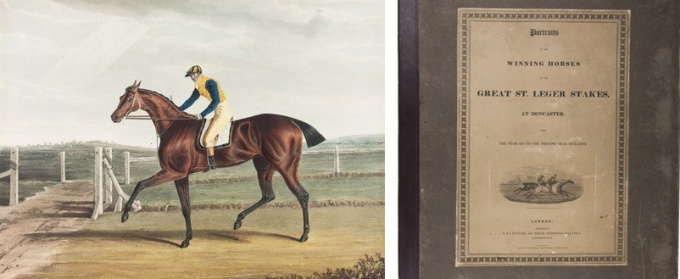







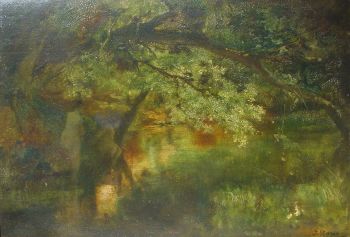




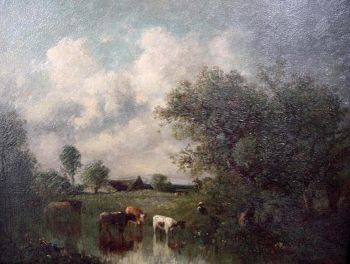

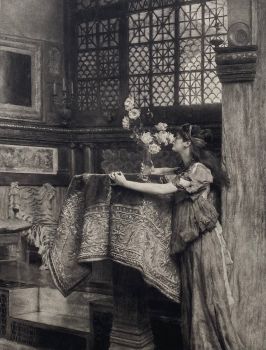
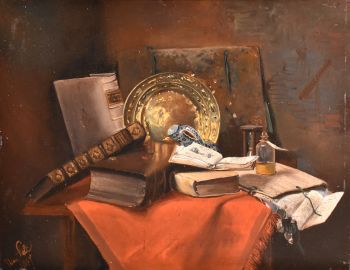

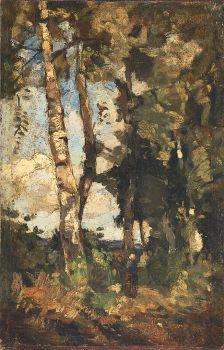


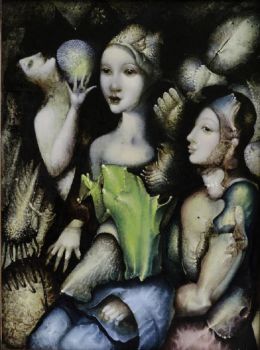

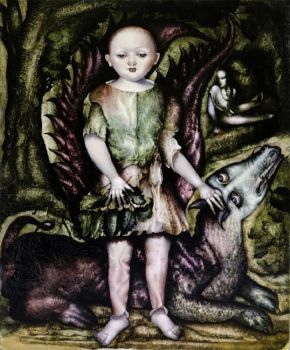
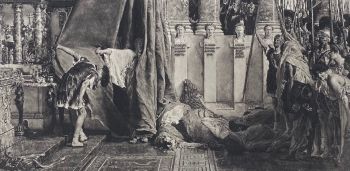
















!["SKIMMING THE WATER [MENAGE A QUATRE]" Signed book plus small artwork by LAWRENCE WEINER](https://media-2.gallerease.com/images/442bfd5f-fc31-4e18-a2fa-ee0c08eade64/350x350/skimming-the-water-menage-a-quatre-signed-book-plus-small-artwork.jpg)








